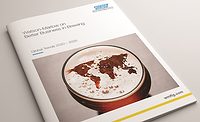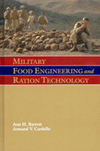Engineering R&D
Cryogenic chillers with bottom injectors effective but tough to clean

Traditional injector design (upper left) is prone to clogging with protein, whereas the LIXSHOOTER resists clogging (view inside blender, lower right).
Photo courtesy of Messer LLC

Michael Newman, head of application technology, Messer LLC
Photo courtesy of Messer LLC


Injecting a cryogen into the bottom of a mixer/blender or kettle is inherently a more efficient way of chilling product than adding water ice, dry ice pellets or CO2 snow from the top, or tempering and mixing frozen meat blocks. Cryogenic bottom injection (BI) mixer chilling leverages the thermodynamic properties of liquid N2 (-320°F) or CO2 (-109.6°F). The cryogen immediately contacts the food to remove more BTUs.
The meat industry has been using BI technology for decades to batch chill fresh product sold to wholesalers, restaurants and supermarkets. Millions of pounds of ground meat and poultry are formed into patties and nuggets and used in mixes such as for burritos. However, traditional cryogenic injectors have always posed problems. For starters, nozzles often clog and typically require additional time for daily maintenance and sanitation. While these might be considered minor issues, clogging can escalate and result in inconsistent chilling and longer cycle times.
Design engineers in Europe realized some time ago that a nozzle that wouldn’t get clogged would be ideal and developed a patented nozzle architecture. The original injector nozzle has been in use in Europe and elsewhere for more than 10 years but required further development for the U.S. market. The new (LIXSHOOTER) injector was formally introduced to the U.S. about two years ago and is now in use by some of the largest meat and poultry processors in the country. The proprietary injectors and a new proprietary control system (SmartChill), both from Messer LLC (Bridgewater, N.J.), open up the benefits of BI mixer chilling to other foods.
I asked Michael Newman, head of application technology, Messer LLC, to fill us in on the developments and the adaptation of the technology for the U.S.
FE: What are the main advantages?
Michael Newman: The beauty of the LIXSHOOTER design is that the nozzle is self-closing. This was the first BI nozzle in the meat industry with a positive shut off, and it seals against the inside wall of the blender.
Traditional nozzles are essentially a solid bar of stainless steel with one or more through holes. Each nozzle is coupled to a cryogenic line for either CO2 or N2, and the injector sits inside a stainless steel sleeve, which may be insulated with an inner sleeve of Teflon or UHMW. The problem is those holes at the bottom of the mixer are open and can harbor water-soluble proteins and particles, which may cause clogging and a food safety risk.
FE: What was the primary production issue for customers in the U.S.?
Newman: The very high moisture-content poultry mixes are far more difficult to process and chill consistently with old-style nozzles. Product can easily get forced into the nozzles and back into the flex line. That creates two main issues: First, when nozzles plug, you don’t get sufficient chilling into the blender, and chilling cycle times increase. Second, there is now meat residing in those nozzles, so they have to be removed every night, cleaned and sanitized.
FE: Why wasn’t the LIXSHOOTER injector introduced to the U.S. market earlier?
Newman: One reason is it was too expensive. In Europe, meat processors don’t process the same volume as those in the U.S. They tend to use smaller blenders and need fewer nozzles, typically six to eight versus 10 to 14 for a typical mixer here, and major processors may have several operating at different locations. The flow rates of the original nozzles were also lower, so both conventional nozzles and the existing design have been satisfactory for Europe.
But we saw an opportunity to respond to U.S. poultry customers and contribute to their efforts to improve process quality and hygiene. We saw a growing emphasis on food safety programs along with growing consumer demand for ground poultry products. Our team of designers and engineers cut the cost to manufacture by about 70%—and developed a much better design. The hygienic design includes a positive shut-off at the blender wall and solves key issues for those processing high-moisture content poultry mixes.
FE: Can tanks, mixers and blenders be retrofitted with the nozzle?
Newman: Yes, the new LIXSHOOTER injectors can be installed by OEMs on new mixers or blenders, or they can be retrofitted to existing plant equipment. In fact, one of the advantages of the new design is a proprietary template system that allows a nozzle to be installed in about 30 minutes rather than up to two hours for other injectors.
FE: Can injectors be installed with liquid nitrogen or carbon dioxide?
Newman: We can equip mixers with whichever cryogen is best for the line and the plant location. If a plant is already using a particular cryogen, we can use that. But if they later want to change, the same nozzles are used for CO2 as N2. There is, of course, a massive difference in operating pressure (about 280 psi for CO2 and 40 psi for N2). With other designs, switching cryogens means you have to change all the nozzles. Not so with LIXSHOOTER injectors.
FE: Were there also changes to the controls?
Newman: Some of the details are proprietary. What I can tell you is that our SmartChill control system matches the ratio of the liquid cryogen to the food in the grinder or mixer.
With existing BI systems, when operators notice the batch temperature getting uneven or warmer during a shift, they will usually increase the cycle time a bit. It may take more than one try, and they will typically overcompensate. That wastes cryogen and introduces process variability.
The SmartChill system changes BI chilling from something of an art form into a closely calculated process. It treats N2 as a precise ingredient, so processes can be much more repeatable. It takes away operator guesswork, and it ultimately results in higher overall production efficiencies and reduces cryogen usage because you’re consistent from batch to batch.
FE: Besides the energy/gas savings, what other advantages result from this architectural design change?
Newman: The new injectors and control system give a processor a lot of flexibility to switch between products and to improve throughput. If a processor is running a blender with LIXSHOOTER injectors and wants to decrease the chill time from 10 minutes to eight, for example, the nozzle flow rates can be adjusted. On a typical BI system, you would have to change out all the nozzles.
FE: Is this approach more food safe?
Newman: SmartChill is designed to reduce and eliminate variations that could cause inconsistent food temperatures during the chilling process. Coupled with the proprietary LIXSHOOTER design—that seals against the blender wall and blocks out water-soluble protein and food particles—we believe this is simply the most hygienic and efficient solution today for BI chilling.
FE: Are there any CLEANING BENEFITS?
Newman: Since there’s no need for daily disassembly, that saves time and labor. The typical cleaning routine is to hose off the face of the nozzles with the inside of the mixer.
FE: What food products are likely to benefit most?
Newman: The hygienic design opens up BI chilling to many more foods beyond patties and nuggets, including many prepared foods and wet food mixes.
FE: What is the availability of the injectors and the control system?
Newman: Both are available now. You can install just the new injectors on a blender and see the benefits. But SmartChill is the final piece to making LIXSHOOTER a complete, efficient system.
For more information, visit www.messerusfood.com
Looking for a reprint of this article?
From high-res PDFs to custom plaques, order your copy today!











